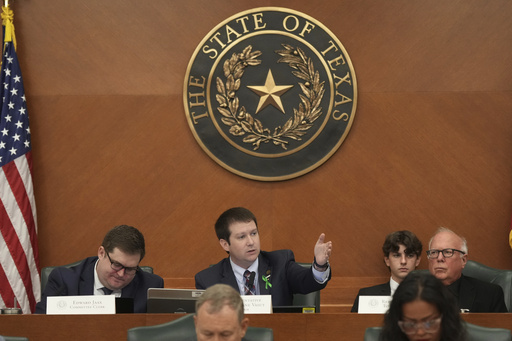In Austin, Texas, state Democrats found themselves at odds with Republicans over plans to redraw congressional maps. This initiative follows a rare and accelerated summer reshuffling prompted by former President Donald Trump, aiming to bolster more seats for Republicans in the U.S. House ahead of the 2026 elections.
Little was revealed regarding the potential new district outlines during the initial public hearing held at the Texas Capitol. Present were three Democratic members of Congress and over 100 citizens gathered outside to voice their discontent, eventually giving testimonies before a legislative committee.
“You all are being used,” stated Democratic U.S. Representative Joaquin Castro, accusing the move of creating voter confusion and compelling other states to rush into redistricting. Alongside his fellow Democrats, Castro opposed the unprecedented timing of this redrawing process, as legislative redistricting typically aligns with the decennial U.S. census.
Interestingly, aside from a brief introduction by Committee Chair Rep. Cody Vasut, who dissociated himself from White House directives, Republican members remained silent during the testimonies. Vasut deflected a query about the necessity of mid-cycle redistricting, saying it was a matter of personal opinion.
As Republicans aim to approve new maps within a 30-day special legislative session, more hearings are slated to occur across the state. This tight timeframe coincides with efforts to navigate the aftermath of fatal floods that recently devastated Texas Hill Country, claiming at least 136 lives.
Democrats, alongside state residents, are voicing concerns over the limited public hearings. They demand more transparency and argue that some hearings should occur post map revelation by the legislature.
Characterizing the redistricting initiative as a power grab, Democrats vow to halt it using various strategies, including the potential for walkouts or filibustering. However, with limited power as the minority, these tactics come with risks; House rules introduced fines for continued absences after past similar protests.
Seeking leverage, Democrats have linked their legislative participation to advancing flood relief measures, holding other bills ransom until their priority is addressed.
Currently, Texas boasts 38 House seats, with Republicans occupying 25 and Democrats 12, excluding one vacant seat after Rep. Sylvester Turner’s passing. With a narrow GOP majority in the U.S. House, Trump’s proposal of five additional winnable seats could significantly boost Republican odds of retaining control.
However, the strategy carries risk. Excessive district manipulation, referred to as “dummymandering,” could unexpectedly advantage opponents if not executed carefully.
Earlier this month, concerns were further amplified when the Justice Department flagged “constitutional concerns” over potential racial gerrymandering in the 2021 map, leading to tensions during a recent Senate debate. Here, top Republicans faced fervent questioning from Democrats regarding map legitimacy.
“I believe the map I voted for was legal,” remarked Sen. Phil King, brushing off any direct evidence from the Department of Justice letter.
Litigation continues as civil rights groups contest the legality of the 2021 maps, asserting racial bias in district delineation.
Outside Texas, Trump has also urged Republicans in Ohio to modify their House maps, countered by California, where Governor Gavin Newsom pledged similar actions. However, California leans on an independent commission established in 2010 for such redistricting efforts.


